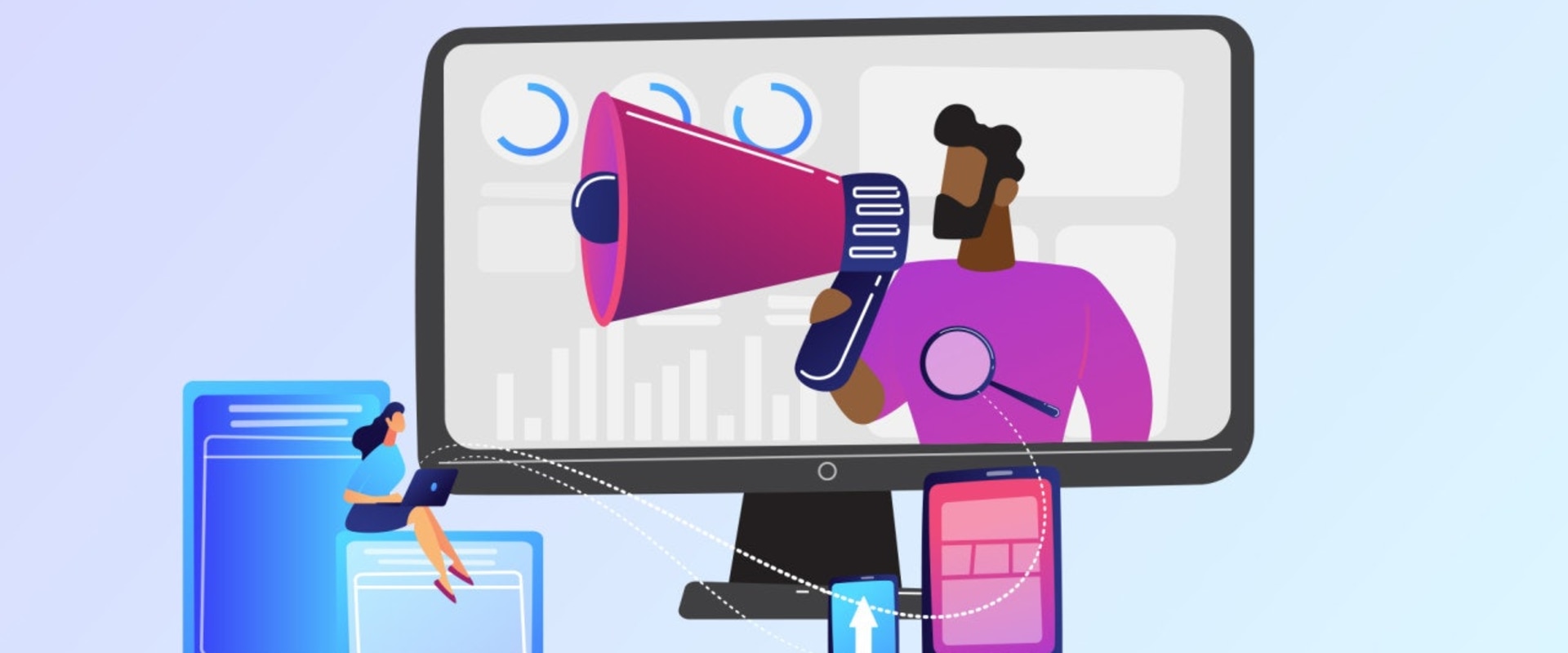With the rapid advancement of digital marketing trends, it has become increasingly important for businesses to develop effective content distribution strategies in order to maximize their reach and success. From leveraging social media platforms to utilizing SEO tactics, there are a range of strategies businesses can use to ensure their content reaches the right audience at the right time. In this article, we'll explore the latest digital marketing trends and provide tips for creating an effective content distribution strategy for your business.
Using Paid Advertising
Paid advertising can be an effective way to reach a wider audience and boost engagement with your content. This can be done through platforms like Google Ads, Facebook Ads, and other paid campaigns.By using these platforms, you can target specific audiences, measure the performance of your ads, and track conversions. Additionally, you can optimize your campaigns in real-time to ensure that you are getting the most out of your investment. Paid advertising can also be used to boost brand visibility and increase website traffic. When creating paid campaigns, it is important to consider the desired outcome of the campaign and create ads that are tailored to your target audience.
You should also focus on developing compelling visuals and copy that will engage your audience and encourage them to take action. Finally, you should track and analyze the performance of your campaigns to ensure that they are meeting your goals and objectives.
Measuring Success
Measuring the success of your content distribution strategy is an important part of digital marketing. Analytics tools can be used to track the reach and effectiveness of your content. This includes monitoring the number of views, clicks, conversions, and other user engagement metrics.Additionally, you can use A/B testing to compare different versions of your content and determine which is most successful. You should also track the performance of specific campaigns and channels. This will help you identify which strategies are delivering the best results. For example, if you find that a particular platform is driving more traffic than others, you can focus on optimizing your content for that platform. Finally, it’s important to analyze how your content is resonating with your target audience. You can do this by gathering feedback from users and tracking the sentiment of comments and reviews.
Timing Your Content Distribution
When planning out your content distribution strategy, timing is everything.Timing your content correctly can make a huge difference in the success of your digital marketing efforts. Here are some tips to consider when timing your content:1.Choose the right time of day: Different audiences will be online at different times, so you need to choose the right time of day to post your content. Use analytics to find out when your target audience is most active and post your content then.
2.Post consistently:
Consistent posting is important for building an audience. Posting at the same time each day or week will help you create a regular following.3.Monitor engagement: Pay attention to when your content gets the most engagement and use that as a guide for future posts. If you notice that posts on certain days tend to get more engagement, prioritize those days for future posts.
4.Re-share content:
Re-sharing old content is an easy way to increase engagement and reach new audiences. Consider re-sharing your most popular posts at different times or on different days to maximize reach.5.Test different times:
Experiment with different times of day and days of the week to see which ones work best for your audience.This will help you refine your content distribution strategy over time and ensure you’re getting the most out of your efforts.
Choosing the Right Channels
Once you’ve identified your target audience, it’s time to choose the right channels and platforms to distribute your content. With the right content distribution strategy, you can effectively reach your target audience, build brand awareness and drive more traffic to your website. When selecting channels and platforms for content distribution, there are a few key factors to consider. First, think about the type of content you’re creating.Different types of content require different channels for distribution. For instance, if you’re creating video content, you’ll want to focus on platforms like YouTube or Vimeo. If you’re creating written content, platforms like Medium or LinkedIn may be more appropriate. It’s also important to consider the audience you’re targeting. Different channels and platforms attract different types of users.
You should select the channels and platforms that best align with your target demographic. For example, if you’re targeting young people, you may want to focus on Snapchat or Instagram. Finally, consider the amount of time and resources required to effectively use each channel or platform. If you don’t have the time or resources to dedicate to a particular platform, it may be best to avoid it or find a way to automate the process. By carefully considering these factors, you can select the best channels and platforms for distributing your content and maximize the impact of your digital marketing efforts.
Identifying Your Target Audience
Before you can begin to craft an effective content distribution strategy, it is essential to first identify your target audience. This is the key to successful content distribution, as it helps you understand who your content should be aimed at and what kind of content will resonate with them.There are a few different approaches to identifying your target audience, such as analyzing your current customer base, researching your competitors' target audiences, or using a combination of both. Analyzing your current customer base is the simplest way to identify who your content should be directed towards. By looking at data from your current customers, such as age, gender, location, interests, and more, you can gain valuable insights into who would be most likely to engage with your content. This information can then be used to create more targeted content distribution strategies. Researching your competitors' target audiences is another way to identify your ideal audience. By looking at the types of content they are creating and distributing, you can gain an understanding of what type of content resonates with their audience.
Furthermore, you can use this information to create content that is similar but more relevant to your own audience. Finally, you can also use a combination of both approaches. By combining data from your current customer base with insights into your competitors' target audiences, you can create a comprehensive list of characteristics that describe your ideal target audience. This information can then be used to craft a content distribution strategy that is tailored to the specific needs of your target audience.
Identifying Your Target Audience
Before you can begin to craft an effective content distribution strategy, you need to identify your target audience. This means understanding who your ideal customer is and what their needs and interests are.You can do this by researching your target market and analyzing the data to get a better understanding of who your potential customers are. Additionally, you can use customer surveys, polls, interviews, and focus groups to gain insight into your target audience. Once you have identified your target audience, you will be able to craft content that speaks directly to them. You can tailor your content distribution strategy in such a way that it reaches the right people at the right time with the right message. By understanding who your customers are and what they need, you can create content that resonates with them and encourages them to take action.
Choosing the Right Channels
Once you’ve identified your target audience, you can begin to choose the right channels and platforms to distribute your content.While there are many different options available, it’s important to select the ones that are most likely to reach your target audience. Here are some tips to help you choose the right channels:1.Identify Your Audience’s Preferred PlatformsBefore you start creating content, take some time to research your target audience. What platforms do they prefer? Are they active on social media? Are there any forums or online communities that they frequent? Knowing the answers to these questions will help you narrow down your content distribution options.
2.Consider Your Content Format
Different platforms lend themselves to different types of content. For example, if you’re creating a video, YouTube may be the best option.If you’re creating a blog post, consider publishing it on your website and then sharing it on social media and other platforms. This will help ensure that your content reaches the right people.
3.Utilize Automation Tools
Automation tools can help make content distribution easier and more efficient. With the right tools, you can schedule posts in advance, track analytics, and optimize content for different platforms.4.Experiment with Multiple Channels
Don’t limit yourself to one platform. Try experimenting with multiple channels and see which ones work best for your content.You may find that some channels generate more engagement than others, so it’s important to test different options.
Timing Your Content Distribution
When it comes to effective content distribution, timing is everything. You need to ensure that your content is distributed at the right time so that it reaches the right audience. This means understanding your target audience and their habits, as well as analyzing the behavior of your competitors. That way, you can identify the best times to post your content and make sure it reaches the most people. Once you have identified the ideal timing for your content distribution, it's important to stick to it.This means that you should post your content at the same time each day or week in order to maximize its reach and ensure consistent engagement with your content. Additionally, it can be helpful to experiment with different times and platforms to see which gets the best results. It's also important to remember that when you distribute content, you should be providing value. If you are simply reposting the same old content, then it won't be as effective as if you are providing fresh, interesting content that your audience will appreciate. So, make sure that your content is timely, relevant, and provides value in order to maximize its impact.








Leave Reply